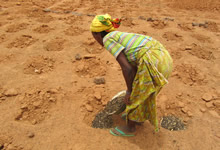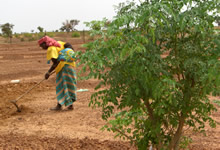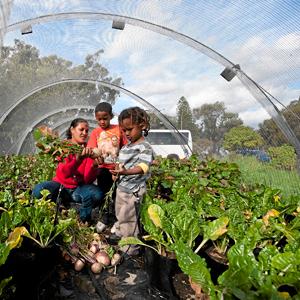Posted 13 September 2011, by Brenda Norrell, Censored News, bsnorrell.blogspot.com
Communities of Black Mesa Have Always Maintained That Their Struggle for Life, Land; Future Generations Is For Our Collective Survival.
Greetings from Black Mesa Indigenous Support,
 We are excited to once again extend the invitation from Dineh resisters of the Big Mountain regions of Black Mesa in joining a caravan of work crews in support of the on-going struggle to protect their communities, ancestral homelands, future generations and planet that we all share. These communities are in their fourth decade year of resistance against the US Government’s forced relocation policies, Peabody Coal’s financial interests, and an unsustainable fossil fuel based economy.
We are excited to once again extend the invitation from Dineh resisters of the Big Mountain regions of Black Mesa in joining a caravan of work crews in support of the on-going struggle to protect their communities, ancestral homelands, future generations and planet that we all share. These communities are in their fourth decade year of resistance against the US Government’s forced relocation policies, Peabody Coal’s financial interests, and an unsustainable fossil fuel based economy.
Participating in this caravan is one small way in supporting these courageous communities who are serving as the very blockade to massive coal mining on Black Mesa. The aim of this caravan is to honor the requests and words of the elders and their families. With their guidance we will carry their wishes & demands far beyond just the annual caravans and link this struggle with social, environmental, and climate justice movements that participants may be a part of.
By assisting with direct on-land projects you are supporting families on their ancestral homelands in resistance to an illegal occupation and destruction of sacred sites by Peabody Energy. We will be chopping and hauling firewood, doing minor repair work, offering holistic health care, and sheep-herding before the approaching freezing winter months.
Indigenous nations are disproportionately targeted by fossil fuel extraction & environmental devastation; Black Mesa is no exception. Peabody Energy, previously Peabody Coal Company (the world’s largest private-sector coal company) is continuing to scheme for ways to continue their occupation of tribal lands under the guise of extracting “clean coal”.
Peabody’s Black Mesa mine has been the source of an estimated 325 million tons of greenhouse gases that have been discharged into the atmosphere.* In the 30+ years of disastrous operations, Dineh and Hopi communities in Arizona have been ravaged by Peabody’s coal mining. As a result of the massive mining operation, thousands of families have had their land taken away and been forcibly relocated. Peabody has drained 2.5 million gallons of water daily from the only community water supply and has left a monstrous toxic legacy along an abandoned 273-mile coal slurry pipeline. Furthermore, Peabody has desecrated & completely dug up burials, sacred areas, and shrines designated specifically for offerings, preventing religious practices. The continued mining by Peabody has devastating environmental and cultural impacts on local communities and significantly exacerbates global climate chaos.
A trench carved out by a Peabody dragline in order to access coal seams. Photo: Jonathan LeFaive
Relocation laws have made it nearly impossible for younger generations to continue living on their homelands. Institutional racism has fueled neglect and abandonment of public services such as water, maintenance of roads, health care, and schools. Many of the residents in the regions of Black Mesa that we’ll be visiting are elderly and winters can be extremely rough on them in this remote high desert terrain. Due to lack of local job opportunities and federal strangulation on Indian self-sufficiency, extended families are forced to live many miles away to earn incomes and have all the social amenities (which include choices in mandatory American education).
It is increasingly difficult for families to come back to visit their relatives in these remote areas due to the unmaintained roads and the rising cost of transportation. As one of their resistance strategies they call upon outside support as they maintain their traditional way of life in the face of the largest relocation of indigenous people in the US since the Trail of Tears.
May we stand strong with the elders & families of Black Mesa in their declaration that “Coal is the Mother Earth’s liver” and join them in action to ensure that coal remains in the ground! Families of Black Mesa are determined to repair and end the devastating impacts of colonialism, coal mining, and forced relocation of their communities, sacred lands, and our planet. False solutions to climate change and large scale coal extraction must be stopped!
Drawing on the inspiration of the elders & families of Black Mesa, they offer us a transformative model for the strategic, visionary change that is needed to re-harmonize our relationships with one another and with the planet. But too often Black Mesa becomes invisibilized as other human rights, environmental justice and climate justice struggles are showcased and highlighted in both the mainstream & progressive media. The truth is that all of these struggles are interconnected and central to our collective survival is the need to increase the visibility of struggles such as Black Mesa, a decades-long indigenous-led resistance to the fossil fuel industry, in related movements for human rights, environmental, climate & social justice.
Forging links between people grounded in movements based on social and ecological justice and the Black Mesa resisters (who are also grounded in these movements) is essential to address the disproportionate problems of poverty and disenfranchisement to achieve social, environmental, & climate justice.
On-Going Resistance To The Continued Desecration Of The Sacred San Francisco Peaks:
Blockade Halts Ski Resort Destruction & Desecration of Holy Mountain. Photo: www.indigenousaction.org
The struggle to protect the San Francisco Peaks is part of an international movement to protect sacred sites and is intricately connected with the struggle to protect the sacred places of Big Mountain & Black Mesa, AZ. The San Francisco Peaks has considerable religious significance to thirteen local Indigenous nations (including the Havasupai, Dine’ {Navajo}, Hopi, and Zuni.) In particular, it forms the Dine’ sacred mountain of the west, called the Dook’o’oosłííd.
In recent months the San Francisco Peaks has been desecrated by Arizona Snowbowl Ski Resort with permission from the US Forest Service by cutting 40 acres of pristine forest and laying miles of pipeline to spray artificial snow made of sewage water that would be bought from the City of Flagstaff. In response, there has been a convergence on the peaks to protect what has yet to be desecrated and create a long term form of protection for the Mountain including demonstrations, encampments, multiple lockdowns, further litigation, and tribes filing a human rights complaint with the United Nations.
If you’re visiting Black Mesa, then you will be likely be traveling through the vicinity of the holy San Francisco Peaks which is located just outside of Flagstaff, AZ. Stay posted for updates & how you can support the protection of the Peaks at http://www.truesnow.org and http://www.indigenousaction.org
Support the Action in Stopping the American Legislative Exchange Council (ALEC) “States & Nation Policy Summit” in Scottsdale, AZ; Nov 30 – Dec 2, 2011:
ALEC- a conglomerate of legislators and corporate sponsors is planning to meet for their “States and Nation Policy Summit” just outside of Phoenix, AZ (Scottsdale) from November 30-December 2, 2011 . “The group’s membership includes both state lawmakers and corporate executives who gather behind closed doors to discuss and vote on draft legislation. ALEC has come under increasing scrutiny in recent months for its role in crafting bills to attack worker rights, to roll back environmental regulations, privatize education, deregulate major industries, and pass voter ID laws”.** Arizona politicians and the private prison industry, under ALEC, finalized the model legislation which became SB 1070, the harshest anti- immigrant measure in the country and a license for racial profiling.
Thanks to ALEC, at least a dozen states have recently adopted a nearly identical resolution asking Congress to compel the U.S. Environmental Protection Agency to stop regulating carbon emissions (which they recently did): http://www.democracynow.org/2011/9/7/smog_v_jobs_is_obama_admin”.
A Peabody Energy representative is on the Corporate Board of ALEC. Kelly Mader, the Vice President of State Government Affairs at Peabody was given ALEC’s 2011 Private Sector Member of the Year Award. In these closed door ALEC meetings, it is no wonder that corporations such as Peabody serve state legislators their agendas on legislation which directly benefit their bottom line. Mader is due to attend the ALEC meeting in Phoenix.
Families of Black Mesa may need supporters to watch over their home and animals so that they can attend the ALEC demonstrations. Please contact BMIS if you can help with this as well as additional logistics such as funds, transportation, and lodging. Thank you!
The struggles on Big Mountain are directly connected to the struggles on the San Francisco Peaks and the movement to stop ALEC. Stay tuned for possible actions and protests in support of struggles to protect ancestral homelands & sacred sites, to stop corporate profiteering off the exploitation, suffering and degradation of us all -particularly indigenous peoples, migrants, the working class, prisoners, and essentially all of Mother Earth.
“Arizona Says NO to Criminalization, Incarceration, & Corporate Profiteering at the Expense of Our Communities” http://azresistsalec.wordpress.com/ *
For additional info on ALEC: http://alecexposed.org/wiki/ALEC_Exposed
Ways you can support:
Join the Caravan: Connect with a coordinator or create a work crew in your region. Contact BMIS so that we can connect you with others who may be in your region. So far caravan coordinators are located in Prescott, Phoenix and Flagstaff, AZ; Denver, CO; Santa Cruz, CA; Eugene and Portland, OR; and the San Francisco’s Bay Area. Meeting locations and dates will be posted on the BMIS website & our facebook page as coordinators set them up. This caravan will be in collaboration with the annual Clan Dyken Fall Food and Supply Run on Black Mesa. It is of the utmost importance that each guest understands and respects the ways of the communities that we will be visiting. Prior to visiting Black Mesa, all guests must read and sign the Cultural Sensitivity & Preparedness Guide: http://blackmesais.org/tag/cultural-sensitivity/
Host or attend regional organizational meetings in your area: We strongly urge participants to attend or organize regional meetings. Due to the large number of caravan participants in past years, we are limiting the number to just under 100 this fall. Please register early and plan on attending meetings held in your region. There you’ll engage in political education work and help regional coordinators plan logistics, fundraisers, and collect donated food and supplies ahead of time.
Trucks, chainsaws, & supplies are integral to the success of the caravan. The more trucks we have, the more wood, water and other heavy loads we can transport. Axes, mauls, axe handles, shovels, tools of all kinds, organic food, warm blankets, and did we mention trucks? — either to donate to families or to use for the week of the caravan–are greatly needed on the land to make this caravan work! We’ve got a 501-C3 tax-deductible number, so if you need that contact us. Please keep checking the BMIS website for an ongoing list of specific requests by Black Mesa residents.
A Navajo man holds up a piece of coal that is spotted with “fool’s gold”. Photo: Jonathan LeFaive
Challenge Colonialism! One of our main organizing goal’s is to highlight anti-colonial education within all the regional meetings leading up to the caravan. In addition to the Cultural Sensitivity Guide, we encourage you to bring articles, films, and other resources to your regional meetings & host discussions that further our collective understanding for transforming colonialism, white supremacy, genocide, & all intersections of oppression. We have started a resources list, which is now on the website. Feel free to share with us any resources that you like so that we can build upon this list & strengthen our growing support network! In addition please check out our Points Of Unity.
Fundraise! Fundraise! Fundraise! As a grassroots, all-volunteer network, we do not receive nor rely on any institutional funding for these support efforts, but instead count on each person’s ingenuity, creativity, and hard work to make it all come together. We are hoping to raise enough money through our community connections for gas, specifically for collecting wood and food for host families, and for work projects. Host events, hit up non-profits, generous food vendors, and folks in your own networks. An article that we want to highlight is ‘8 Ways to Raise $2,500 in 10 Days’. Check our website soon for this document, template letters to vendors, fundraising guidelines, and more. You can Donate here: http://blackmesais.org/donate/
Stay with a family any time of the year: Families living in resistance to coal mining and relocation laws are requesting self-sufficient guests who are willing to give three or more weeks of their time, especially in the winter. Contact BMIS in advance so that we can make arrangements prior to your stay, to answer any questions that you may have, and so we can help put you in touch with a family. It is of the utmost importance that each guest understands and respects the ways of the communities that we will be visiting. Prior to visiting Black Mesa, all guests must read and sign the Cultural Sensitivity & Preparedness Guide: http://blackmesais.org/tag/cultural-sensitivity/
Give back to the Earth! Give to future generations!
May the resistance of Big Mountain and surrounding communities on Black Mesa always be remembered, and supported!
With love,
Black Mesa Indigenous Support
Black Mesa Indigenous Support (BMIS) is a grassroots, all-volunteer collective committed to supporting the indigenous peoples of Black Mesa in their resistance to massive coal mining operations and to the forced relocation policies of the US government. We see ourselves as a part of a people powered uprising for a healthy planet liberated from fossil fuel extraction, exploitative economies, racism, and oppression for our generation and generations to come. BMIS stands with the elders of Black Mesa in their declaration that “Coal is the Mother Earth’s liver” and joins them in action to ensure that coal remains in the ground.
Address: P.O. Box 23501, Flagstaff, Arizona 86002
Voice Mail: 928.773.8086
Email: blackmesais@gmail.com
Web: www.blackmesais.org

















